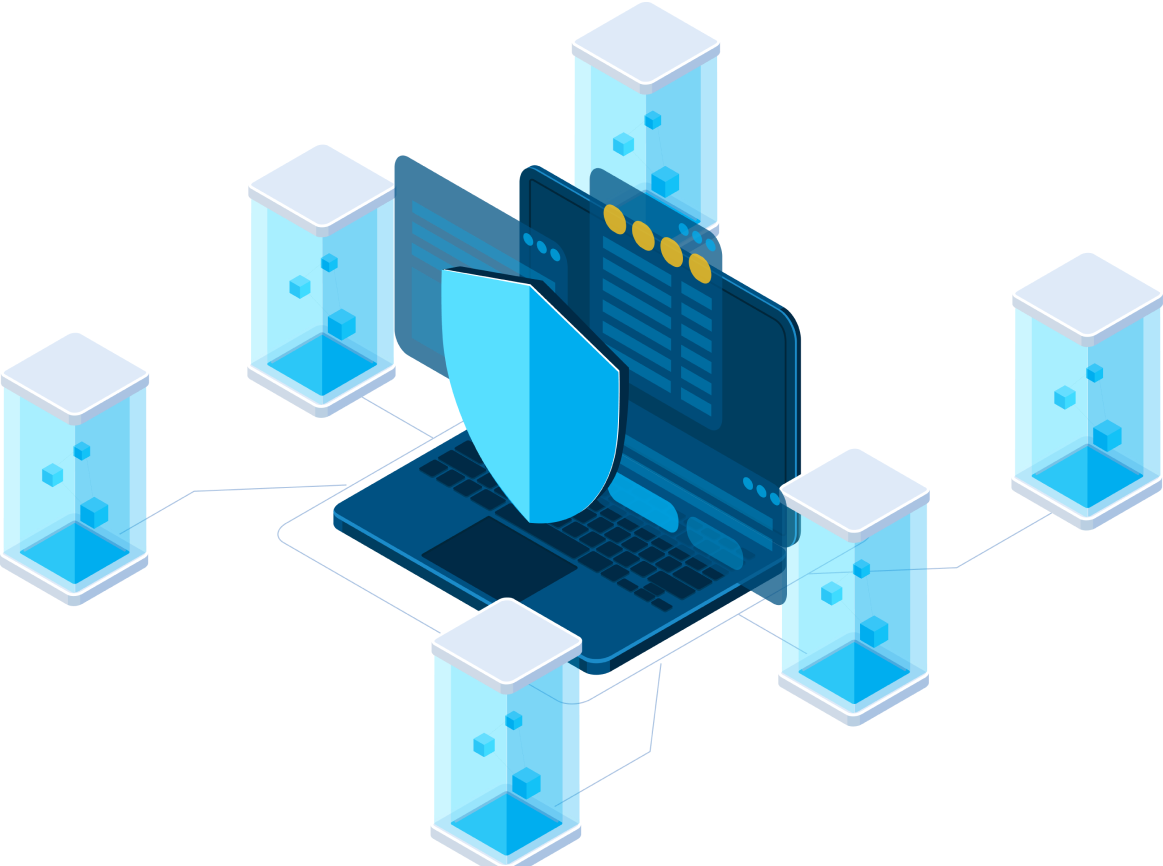
Multi-Vector Security Defeating Evasive Malware
How multi vector security solutions neutralize evasive malware is a crucial topic in today’s digital landscape. Malware constantly evolves, finding new ways to slip past traditional defenses. This exploration delves into the sophisticated strategies employed by modern security solutions to combat these threats, from the intricate mechanisms of neutralization to the advanced threat protection strategies. We’ll uncover the power of multi-vector approaches and how they’re adapting to the ever-changing nature of cyberattacks.
Multi-vector security solutions are designed to address a wide range of security threats, employing multiple layers of defense to identify and neutralize malware. They analyze various data points, correlate security events, and respond to identified threats with containment and eradication procedures. This detailed look at these solutions will provide insight into the technologies and methodologies used in the fight against increasingly sophisticated malware.
Defining Multi-Vector Security Solutions: How Multi Vector Security Solutions Neutralize Evasive Malware
Multi-vector security solutions are becoming increasingly crucial in today’s complex threat landscape. These solutions represent a paradigm shift from traditional, single-point security approaches, recognizing that modern malware often employs multiple attack vectors to breach defenses. Understanding their capabilities and limitations is vital for organizations aiming to protect their critical data and systems.Multi-vector security solutions are designed to address the multifaceted nature of contemporary cyber threats.
They leverage various security technologies, working in concert to detect, prevent, and respond to attacks across multiple points of entry. This integrated approach provides a comprehensive defense against the sophisticated and evolving tactics of attackers.
Key Characteristics of Multi-Vector Solutions
Multi-vector security solutions exhibit several key characteristics that distinguish them from traditional security measures. These characteristics include a holistic approach to threat detection, real-time threat intelligence integration, and automated response capabilities. Their adaptability and continuous learning make them vital for mitigating the ever-changing cyber threat landscape.
Components of a Multi-Vector Security Solution
A robust multi-vector security solution typically comprises several interconnected components. These include endpoint detection and response (EDR) systems, network security appliances, security information and event management (SIEM) tools, and cloud security platforms. The effective integration of these elements is crucial for comprehensive threat protection.
Addressing Diverse Security Threats
Multi-vector security solutions are designed to address a wide array of sophisticated threats. These threats range from sophisticated malware that exploits vulnerabilities in multiple systems to advanced persistent threats (APTs) that employ stealthy and targeted attacks. The breadth of threats that multi-vector solutions address is crucial for comprehensive security.
Multi-vector security solutions are crucial for stopping sneaky malware. They use various methods, like network monitoring and behavioral analysis, to identify and block threats. For example, understanding vulnerabilities like those in Azure Cosmos DB, as detailed in Azure Cosmos DB Vulnerability Details , highlights the importance of a layered defense strategy. This approach ensures that even sophisticated threats can’t slip through the cracks, effectively neutralizing evasive malware.
Examples of Multi-Vector Security Products and Platforms
Several commercial solutions exemplify multi-vector security principles. These solutions include CrowdStrike Falcon, Microsoft Defender for Endpoint, and Palo Alto Networks’ Prisma Access. Each platform offers unique features and functionalities, but they all share the common goal of securing diverse environments.
Multi-vector security solutions are crucial for neutralizing evasive malware, detecting threats from multiple angles. However, a critical aspect of this is the need for advanced tools, like those discussed in Deploying AI Code Safety Goggles Needed , to enhance code security. Ultimately, these sophisticated solutions are vital in preventing malware from even gaining a foothold in the first place, making multi-vector security a must-have in today’s threat landscape.
Comparison of Multi-Vector Security Approaches
| Approach | Description | Strengths | Weaknesses |
|---|---|---|---|
| Endpoint-centric | Focuses on securing individual devices (endpoints) and their associated data. | Good at detecting and responding to threats at the point of entry. | Limited visibility across the entire network. May miss threats that bypass the endpoint. |
| Network-centric | Focuses on securing network infrastructure and traffic flow. | Provides broad network visibility and control. | May struggle to detect sophisticated threats that target individual endpoints. Can be slow to react to fast-moving threats. |
| Cloud-centric | Focuses on securing cloud-based resources and data. | Essential for organizations with significant cloud deployments. | Requires specialized tools and expertise for proper implementation. May be difficult to integrate with existing on-premises solutions. |
| Integrated Multi-Vector | Combines endpoint, network, and cloud security solutions into a cohesive system. | Provides comprehensive threat detection and response across all environments. Facilitates efficient threat correlation and incident response. | Requires significant investment in implementation and maintenance. Integration complexity can be challenging. |
Understanding Evasive Malware

Evasive malware represents a significant challenge to cybersecurity, constantly adapting and evolving to circumvent traditional security solutions. These sophisticated threats often employ complex techniques to evade detection, making it crucial to understand their characteristics and methods. By understanding the tactics employed, organizations can better prepare for and defend against these threats.Evasive malware is designed to avoid detection and analysis by security tools.
It achieves this by employing various obfuscation and evasion techniques, making it difficult for traditional security solutions to identify and neutralize malicious behavior. The key to combating this threat lies in recognizing these techniques and developing security solutions that can adapt to the evolving nature of these threats.
Characteristics of Evasive Malware
Evasive malware exhibits several key characteristics that distinguish it from traditional malware. These include a high degree of adaptability, often altering its behavior and code structure to avoid detection by signature-based systems. They also frequently employ sophisticated obfuscation techniques, making it harder to understand their intended functionality and malicious behavior. Furthermore, evasive malware frequently employs dynamic techniques to modify its behavior at runtime, hindering static analysis methods.
Techniques for Evasion
Evasive malware employs a range of techniques to evade traditional security solutions. These include polymorphism, metamorphism, and the use of rootkits. These methods, often combined, make detection and eradication incredibly challenging.
Types of Evasive Malware
Several distinct types of evasive malware exist, each employing different techniques to evade detection.
- Polymorphic Malware: This type of malware modifies its code structure to avoid detection by signature-based security solutions. Each instance of the malware may have a slightly different code structure, making it hard to create a signature that can detect all variations. This constant variation hinders the ability of static analysis to recognize malicious intent.
- Metamorphic Malware: More advanced than polymorphic malware, metamorphic malware significantly alters its code structure with each execution. Not only does it change its code, but it also modifies its functionality, making detection by signature or behavioral analysis even more difficult. This dynamic nature renders traditional detection methods ineffective.
- Rootkit-Based Malware: This type of malware hides its presence by modifying the operating system’s kernel or other core components. By masking its existence, rootkits effectively avoid detection and can control system resources without being identified by traditional security solutions. This ability to conceal itself within the operating system makes it extremely difficult to detect and remove.
Evasion Strategies by Malware Type
The table below Artikels the various evasion strategies employed by different types of evasive malware.
| Malware Type | Evasion Strategy | Description |
|---|---|---|
| Polymorphic Malware | Code Modification | Alters its code structure, but maintains functionality, to evade signature-based detection. |
| Metamorphic Malware | Code Transformation | Completely transforms its code structure with each execution, making it almost impossible to recognize malicious behavior. |
| Rootkit-Based Malware | System Hiding | Hides its presence by modifying the operating system’s kernel or other core components. |
Mechanisms of Neutralization
Multi-vector security solutions aren’t just about detecting threats; they’re about dismantling them. This involves a layered approach, employing various mechanisms to neutralize evasive malware before it can cause harm. These solutions understand that modern malware is sophisticated, often employing techniques to evade traditional security measures. A multi-layered defense is crucial to effectively counter these evasive tactics.The core strategy lies in understanding the malware’s behavior and proactively disrupting its malicious activities.
This involves analyzing the malware’s code, identifying its patterns, and then implementing countermeasures that stop it in its tracks. Crucially, these solutions are designed to adapt to the constantly evolving threat landscape.
Specific Neutralization Mechanisms
Multi-vector security solutions utilize a variety of techniques to neutralize evasive malware. These mechanisms work in concert to create a robust defense system. Central to this approach is the ability to analyze the behavior of files and processes in real-time.
Multiple Layers of Defense
These solutions deploy multiple layers of defense, each with a specific function. The first layer often involves preventative measures like intrusion detection and prevention systems (IDS/IPS). These systems monitor network traffic for malicious activity, blocking known threats and suspicious patterns. The second layer involves deep packet inspection, where the contents of network packets are examined for malicious code.
Third-layer solutions focus on sandboxing and emulation. Sandboxing allows the execution of suspicious files in a controlled environment to observe their behavior without harming the system. Emulation replicates the execution environment of the malware on a virtual machine, allowing for in-depth analysis without risk. The final layer focuses on remediation, immediately removing or quarantining infected files and processes.
Machine Learning and AI in Detection
Machine learning (ML) and artificial intelligence (AI) play a critical role in modern multi-vector security. ML algorithms can be trained on vast datasets of known and unknown malware to identify new, emerging threats and patterns. AI algorithms can analyze network traffic and system behavior to detect anomalies that indicate malicious activity. These tools are constantly evolving and learning, becoming increasingly effective at identifying and neutralizing evasive malware techniques.
Multi-vector security solutions are crucial in today’s threat landscape, effectively neutralizing evasive malware by employing multiple layers of defense. These solutions combine various security technologies, like firewalls, intrusion detection systems, and endpoint protection, to identify and block threats from multiple entry points. For example, knowing the Department of Justice Offers Safe Harbor for MA Transactions (which is a very important legal development, check out this article ) can help companies better understand the legal context for their security strategies, further strengthening their multi-layered approach to defending against malware.
Ultimately, these comprehensive solutions are essential for preventing and mitigating the damage caused by sophisticated, evasive threats.
For example, machine learning can analyze patterns in network traffic to identify anomalies, such as unusual communication patterns or data transfers, which might suggest malicious activity.
Methods to Counter Evasion Techniques
Multi-vector solutions employ various methods to counter evasion techniques used by advanced malware.
- Behavior Analysis: This method examines how the malware behaves rather than focusing solely on its code. This is particularly useful for polymorphic and metamorphic malware that changes its code structure to avoid detection. By observing the malware’s actions, security systems can identify malicious intentions regardless of code changes.
- Heuristic Analysis: This involves using rules and heuristics to identify suspicious behavior. These rules are based on the known characteristics of malware and are updated regularly. It’s a proactive approach that helps identify and block potential threats before they cause damage.
- Sandboxing and Emulation: These techniques allow the execution of suspicious files in a controlled environment. This is crucial in identifying malware that may not manifest malicious behavior immediately but later. By observing the malware’s behavior in a contained environment, the system can determine if the activity is malicious.
- Dynamic Analysis: This method involves running the malware in a controlled environment to observe its actions and identify malicious behaviors. This approach is useful for analyzing malware that uses obfuscation or other evasion techniques.
Data Collection and Analysis
Multi-vector security solutions rely heavily on data collection and analysis to effectively identify and neutralize evasive malware. This process is crucial for understanding the intricate behaviors and patterns of these threats, enabling proactive defenses. The sheer volume and variety of data involved demand sophisticated tools and methodologies to extract actionable intelligence.The core function of data collection and analysis is to transform raw data into actionable insights.
This is achieved through meticulous processes, including the extraction of relevant information from various sources, and applying advanced analysis techniques to identify and classify threats. The insights gained inform the development of preventative measures, allowing for a dynamic and adaptive approach to cybersecurity.
Data Collection Processes
Multi-vector security solutions employ a multifaceted approach to data collection, encompassing various sources and methodologies. This comprehensive approach allows for a holistic understanding of the threat landscape.
- Network Traffic Analysis: Solutions monitor network traffic for suspicious patterns, including unusual communication protocols, high volumes of data transfer, and unusual destination addresses. This analysis is a critical component of detecting malware attempts to communicate with command-and-control servers.
- Endpoint Monitoring: Detailed logs from endpoints, including operating system events, application behavior, and file system activity, are meticulously analyzed. This helps to identify malicious activities occurring within the system.
- Security Information and Event Management (SIEM) Integration: Multi-vector solutions often integrate with SIEM systems to collect and analyze security logs from various sources. This integration provides a centralized view of security events, facilitating correlation and threat detection.
- Sandbox Environments: Suspect files and processes are executed in controlled, isolated environments. This allows for the observation of their behavior without jeopardizing the primary system. The sandboxed environment captures detailed information about the malware’s actions and interactions.
Analysis Techniques
Advanced analysis techniques are employed to process the vast amount of data collected. These techniques help to identify and classify threats, providing a deeper understanding of their characteristics.
- Machine Learning: Algorithms are trained on vast datasets of known malware and benign behaviors. This allows the system to identify previously unseen threats based on their similarities to known malicious patterns. The trained models can identify anomalies and patterns indicative of evasive malware tactics.
- Behavioral Analysis: Analyzing the actions and interactions of files and processes helps to identify suspicious behaviors, even if the files’ signatures don’t match known malware. The focus is on recognizing deviations from expected behaviors that indicate malicious intent.
- Heuristics: Rules and patterns based on expert knowledge and historical data are used to identify potentially malicious activities. These rules are adaptable to new and evolving threats, allowing for a flexible approach to threat detection.
Data Sources for Threat Intelligence
A robust threat intelligence system is essential for detecting and responding to evolving threats.
- Open-Source Intelligence (OSINT): Information from publicly available sources, including news articles, forums, and social media, can provide valuable insights into emerging threats and tactics.
- Industry Forums and Communities: Security researchers and professionals often share information and insights on emerging threats, which are valuable for threat intelligence.
- Vulnerability Databases: Data from vulnerability databases, such as the National Vulnerability Database (NVD), provide information on known vulnerabilities that can be exploited by malware.
- Security Agencies and Government Reports: Information from government agencies and security organizations provides a broader perspective on the threat landscape and emerging trends in cyberattacks.
Contribution of Data Points to Evasive Malware Detection, How multi vector security solutions neutralize evasive malware
Different data points from various sources contribute to a comprehensive understanding of evasive malware.
- Network traffic anomalies combined with suspicious endpoint activity can indicate an attempt to evade detection by changing communication patterns or hiding malicious behavior within the system.
- The observed behavior in a sandboxed environment, coupled with the analysis of network communication patterns, can provide crucial information for understanding how the malware adapts to different environments and strategies to evade detection.
- Combining data from different sources, like network traffic, endpoint activity, and vulnerability information, provides a layered approach to detection, improving the accuracy of identifying evasive malware that may attempt to evade detection by changing its behavior.
Correlation and Response Strategies

Multi-vector security solutions excel at detecting and responding to sophisticated threats, but the real power lies in their ability to correlate disparate security events and initiate effective responses. This correlation process is crucial for understanding the bigger picture behind seemingly isolated incidents, identifying malicious patterns, and ultimately neutralizing advanced persistent threats (APTs). By understanding the interrelationships between various security events, these solutions can accurately pinpoint the origin, scope, and objective of the threat, enabling proactive and targeted countermeasures.
Correlating Security Events
The process of correlating security events involves analyzing data from multiple sources, such as intrusion detection systems (IDS), firewalls, endpoint security software, and network monitoring tools. This data encompasses a wide range of information, including user activity, system logs, network traffic patterns, and file system changes. Sophisticated algorithms and machine learning models analyze these data points for patterns and anomalies that may indicate malicious activity.
For example, a sudden spike in network traffic from a specific IP address coupled with unusual file modifications on a critical server might trigger a correlation alert, suggesting a potential intrusion.
Threat Response Mechanisms
Once a threat is identified, the security solution must execute a pre-defined response strategy. This often involves a multi-layered approach, combining several actions to contain and eradicate the threat. The response can include blocking malicious traffic, isolating infected systems, and initiating remediation procedures. The goal is to minimize the damage and restore systems to a secure state as quickly as possible.
For example, if a malicious script is detected on multiple endpoints, the response may involve blocking the associated domain, quarantining the infected machines, and deploying a patch to fix the vulnerability.
Containment and Eradication Procedures
Containment involves isolating the affected systems or network segments to prevent further spread of the malware. This might involve disconnecting infected systems from the network, or creating a virtual air gap to isolate the threat from other critical systems. Eradication involves removing the malware from the affected systems. This could involve deleting infected files, running anti-malware scans, or implementing system resets.
Successful eradication is dependent on having up-to-date malware definitions and robust remediation procedures. A critical aspect of eradication is understanding the specific malware variant, its behaviors, and the best methods for its removal to prevent recurrence.
Threat Response Lifecycle
| Stage | Description |
|---|---|
| Detection | Identifying potential threats based on anomalies in security logs and system behavior. |
| Analysis | Investigating the detected threat to understand its nature, origin, and potential impact. |
| Containment | Isolating the affected systems or network segments to prevent further spread. |
| Eradication | Removing the malware and restoring affected systems to a secure state. |
| Recovery | Recovering data, rebuilding systems, and implementing preventative measures to prevent future attacks. |
| Post-incident Review | Analyzing the entire incident response process to identify areas for improvement and enhance future preparedness. |
Advanced Threat Protection Strategies
Multi-vector security solutions are constantly evolving to combat the ever-changing landscape of malware. These solutions aren’t just reactive; they proactively adapt to emerging threats, employing advanced techniques to identify and neutralize sophisticated attacks. This proactive approach is crucial in mitigating the impact of evasive malware, which often employs sophisticated obfuscation and evasion tactics to bypass traditional security measures.Evasive malware frequently uses techniques like polymorphism, metamorphic code, and code packing to alter its structure and behavior, making it difficult for signature-based detection systems to recognize it.
Multi-vector security solutions employ a layered approach, combining multiple detection methods to identify these threats. This dynamic approach to security, combined with intelligent analysis, helps to keep pace with the ever-evolving threat landscape.
Adapting to Emerging Evasive Malware Techniques
Multi-vector solutions leverage dynamic analysis techniques to identify threats by examining the actual behavior of the suspected file or program. This process allows the solution to detect malware even if its code has been modified or obfuscated. Dynamic analysis effectively bypasses traditional signature-based approaches that only identify known malware.
Employing Dynamic Analysis Techniques
Dynamic analysis techniques are critical for identifying previously unknown or disguised threats. These techniques involve executing the suspicious code in a controlled environment, observing its actions, and correlating its behavior with known malicious patterns. This process allows the solution to analyze the malware’s functionality, identifying potentially malicious activities even if the code’s structure is obfuscated.
Leveraging Behavioral Analysis and Sandbox Environments
Behavioral analysis is a key component of multi-vector solutions, focusing on the actions performed by the code rather than its structure. This approach is especially effective against evasive malware that employs polymorphism or metamorphism to avoid detection. The use of sandbox environments isolates the suspicious code, preventing it from interacting with the host system’s resources or data. This isolation allows for detailed observation of the malware’s behavior without the risk of harm to the system.
Sandboxing Technologies and their Role in Malware Analysis
Sandboxing technologies play a critical role in the analysis of suspicious files. These virtual environments allow for the execution of potentially malicious code in a controlled environment, preventing any damage to the host system. Sandboxing environments isolate the malware from the rest of the network, preventing the malware from accessing sensitive data or spreading further.Sandboxing environments use various techniques to provide a controlled execution environment.
These techniques include virtual machine emulation, containerization, and isolated execution processes. The environment’s ability to monitor system calls, network activity, and file access provides crucial insights into the malware’s behavior. For example, a malicious file might attempt to download additional malicious code or communicate with a remote command and control server. The sandbox environment logs these activities, allowing security analysts to identify and categorize the threat.
This data is invaluable in understanding the threat’s capabilities and creating effective countermeasures.
Real-World Examples
Multi-vector security solutions are proving increasingly crucial in the fight against sophisticated, evasive malware. Their ability to combine multiple security layers and analysis techniques allows them to detect and neutralize threats that traditional, single-point solutions struggle with. This section delves into real-world examples of how these solutions have successfully countered evasive malware, highlighting their adaptability and effectiveness in a constantly evolving threat landscape.The effectiveness of multi-vector solutions lies in their ability to analyze threats from multiple angles.
They leverage data from various sources, including network traffic, system logs, and behavioral analysis, to build a comprehensive picture of potential malicious activity. This holistic approach allows for the detection of subtle anomalies that single-vector solutions might miss, ultimately preventing breaches.
Case Studies of Malware Neutralization
Multi-vector security solutions have proven effective in neutralizing a range of evasive malware campaigns. Their ability to adapt to evolving threat techniques is a key factor in their success.
- The “Phantom” Malware Campaign: This campaign used advanced techniques to avoid detection by traditional antivirus software. The malware employed obfuscation and dynamic code loading to evade signature-based detection. Multi-vector solutions, using machine learning models and behavioral analysis, were able to identify the malware’s malicious actions, even when it modified its code to avoid signature matches. This demonstrated the crucial role of behavioral analysis in identifying complex threats, even when they dynamically alter their execution.
- The “Crypto-Miner” Infection Wave: This widespread infection used various methods to compromise systems and install crypto-mining software. Multi-vector solutions quickly identified the infection patterns across various networks, correlating network traffic anomalies with system log data to identify infected hosts. By correlating network activity with system-level processes, these solutions were able to isolate and quarantine compromised systems before the miners could significantly impact performance.
This demonstrates the power of correlating different data streams for comprehensive threat detection.
- The “Advanced Persistent Threat (APT)” Campaign: This targeted attack utilized a sophisticated, multi-stage approach to compromise a high-value organization. Multi-vector solutions detected subtle anomalies in user activity, system logs, and network traffic patterns that indicated the presence of malicious activity. By analyzing the sequence of events and cross-referencing the actions across different layers, the solution pinpointed the intrusion vector and allowed the organization to contain the attack.
The ability to identify complex, multi-stage attacks is a critical component of multi-vector solutions, emphasizing the importance of comprehensive threat analysis.
Adaptation to Evolving Malware
Multi-vector solutions are not static; they adapt to the evolving nature of malware. As attackers develop new techniques, these solutions continuously improve their detection capabilities.
- Dynamic Updates and Machine Learning: Multi-vector solutions often incorporate machine learning models to analyze and adapt to new attack patterns in real-time. This allows them to identify novel threats without relying solely on pre-existing signatures, which are often outdated quickly in the face of evolving malware. Continuous updates and the dynamic adaptation to evolving malware are key components in a multi-vector security strategy.
- Continuous Improvement of Correlation Algorithms: Multi-vector solutions enhance their ability to correlate and analyze data by continuously refining their correlation algorithms. This ensures that subtle anomalies, even if isolated, are recognized as parts of a larger attack. This process improves the accuracy of threat identification and mitigation in the face of evolving attack strategies.
High-Profile Examples of Neutralized Malware
The following examples showcase how multi-vector solutions have successfully neutralized high-profile malware attacks.
- Example 1: A sophisticated supply-chain attack targeting a major software company was neutralized by a multi-vector solution. The solution identified subtle deviations in network traffic patterns, correlated them with anomalies in system logs, and flagged the infection before it could spread. The solution prevented widespread compromise of the company’s infrastructure.
- Example 2: A nation-state-sponsored attack targeting a critical infrastructure provider was thwarted by a multi-vector security solution. The solution detected unusual access attempts, correlating them with suspicious file modifications. This led to the isolation of the affected systems, preventing further compromise. This illustrates the effectiveness of multi-vector solutions in countering sophisticated attacks targeting critical infrastructure.
Future Trends and Considerations
The landscape of cybersecurity is constantly evolving, with malware authors constantly innovating and finding new ways to bypass traditional security measures. Multi-vector security solutions, while effective against many current threats, must adapt to these emerging trends to remain effective. This involves not only understanding the future of malware evasion but also anticipating the impact of emerging technologies like AI and machine learning on the battleground.
Emerging Malware Evasion Techniques
Malicious actors are continuously refining their methods of evading detection. This includes developing sophisticated obfuscation techniques to mask the malicious code’s intent, employing polymorphic and metamorphically shifting code to avoid signature-based detection, and leveraging advanced techniques for evasion of sandboxing environments. Furthermore, the use of encryption and code packing to hinder analysis is becoming increasingly common. This necessitates a proactive approach to security that focuses on behavioral analysis and threat intelligence.
Challenges and Opportunities for Future Multi-Vector Solutions
Future multi-vector solutions will face several challenges. One key challenge is keeping pace with the ever-increasing complexity of malware. Another is the need for solutions to effectively integrate and correlate data from multiple sources in real-time. This data deluge necessitates sophisticated correlation engines and powerful processing capabilities. However, this also presents an opportunity.
By leveraging advancements in machine learning, these solutions can learn to identify patterns and anomalies in real-time, leading to a more proactive approach to threat detection. Advanced analytics will allow for better threat modeling, leading to quicker and more effective response times.
Impact of AI and Machine Learning
AI and machine learning are poised to revolutionize the fight against evasive malware. These technologies can be employed in several key areas. For instance, machine learning algorithms can be trained to analyze massive datasets of malware samples and identify previously unseen patterns and anomalies. This allows for the detection of novel malware variants and evasive techniques before they are widely deployed.
Furthermore, AI can optimize the correlation of data from various security tools, improving threat detection and response efficiency. Predictive models can identify potential vulnerabilities and recommend appropriate security measures, creating a more proactive security posture.
Adapting to Future Threats
Multi-vector security solutions must adapt to these emerging threats. This adaptation involves developing new and improved detection methods that can identify sophisticated evasive techniques. Further research into behavioral analysis and the use of machine learning will become paramount in identifying and responding to advanced threats. A strong focus on threat intelligence gathering and analysis will be vital to understanding attacker motivations and tactics.
Finally, the ability to adapt and learn from real-time data, especially when combined with robust threat intelligence feeds, will be crucial to success.
Final Wrap-Up
In conclusion, how multi vector security solutions neutralize evasive malware is a dynamic and evolving process. The constant arms race between attackers and defenders necessitates continuous innovation in security solutions. Understanding the multifaceted nature of these solutions, from their comprehensive threat detection and response strategies to their advanced threat protection capabilities, is key to protecting against the evolving landscape of cyberattacks.
By adapting to the latest techniques of evasive malware, organizations can fortify their digital defenses and safeguard their critical assets.
Key Questions Answered
What are the key characteristics of evasive malware?
Evasive malware is characterized by its ability to avoid detection by traditional security solutions. This often involves techniques like polymorphism, metamorphism, and using stealthy rootkits to hide its malicious activities.
How does machine learning contribute to neutralizing evasive malware?
Machine learning algorithms can analyze vast amounts of data to identify patterns and anomalies associated with malicious behavior, enabling faster detection and neutralization of evasive malware. This is especially helpful in identifying previously unknown threats.
What is the role of data analysis in identifying and classifying threats?
Multi-vector solutions use various data analysis techniques to identify and classify threats. This includes correlating security events, analyzing threat intelligence, and identifying malicious patterns across different data sources.
What are some common evasion techniques employed by malware?
Common evasion techniques include polymorphism (changing its code to avoid signature-based detection), metamorphism (completely altering its code structure), and using stealthy rootkits to hide its presence in the system.





